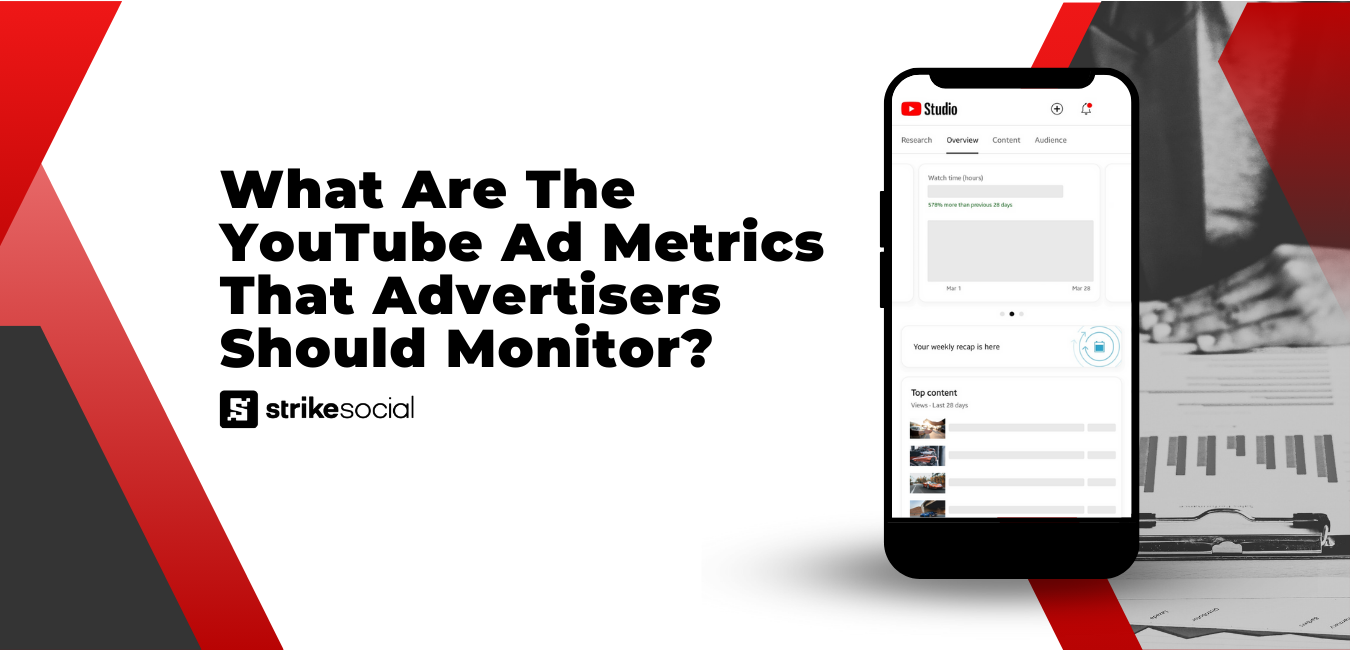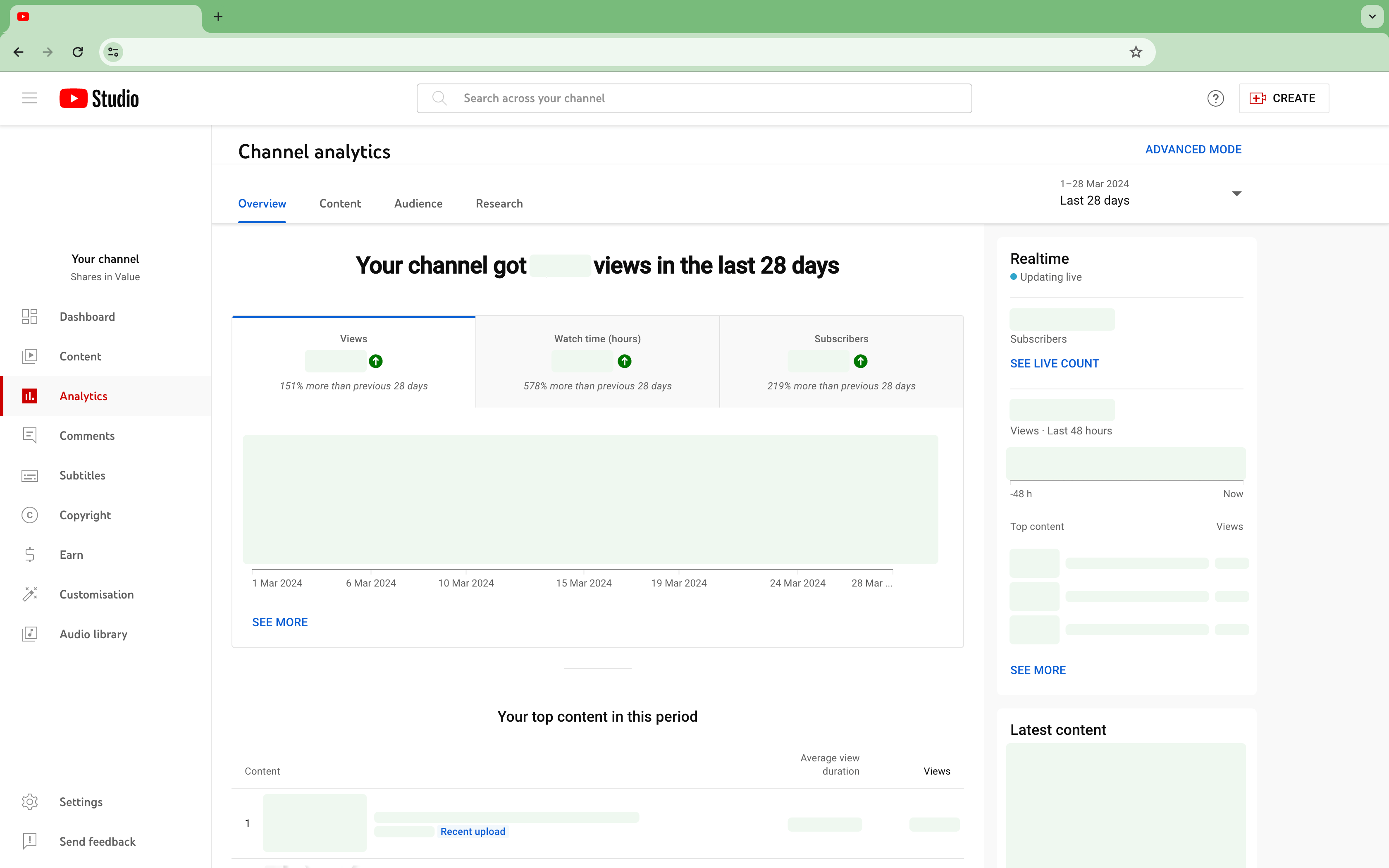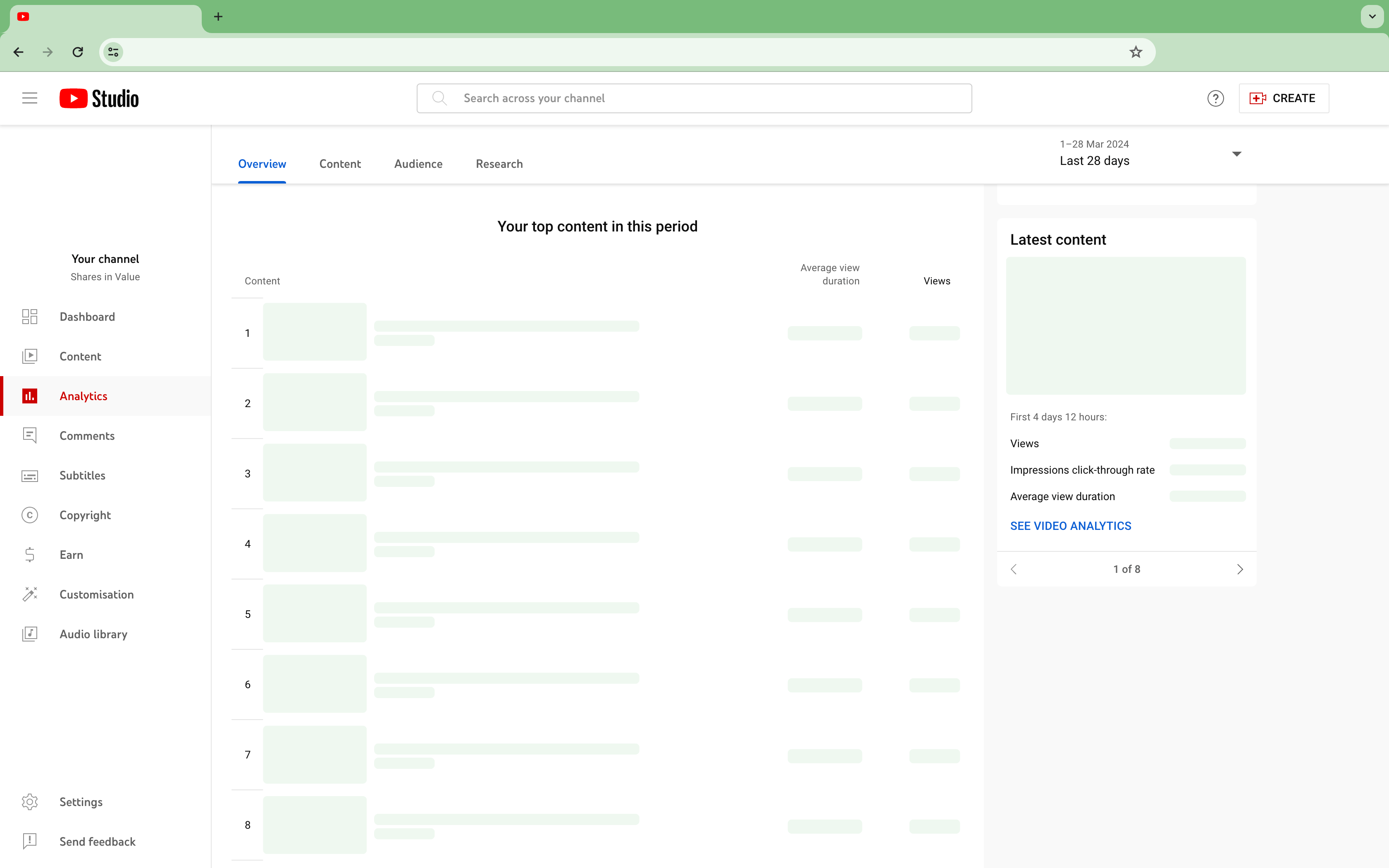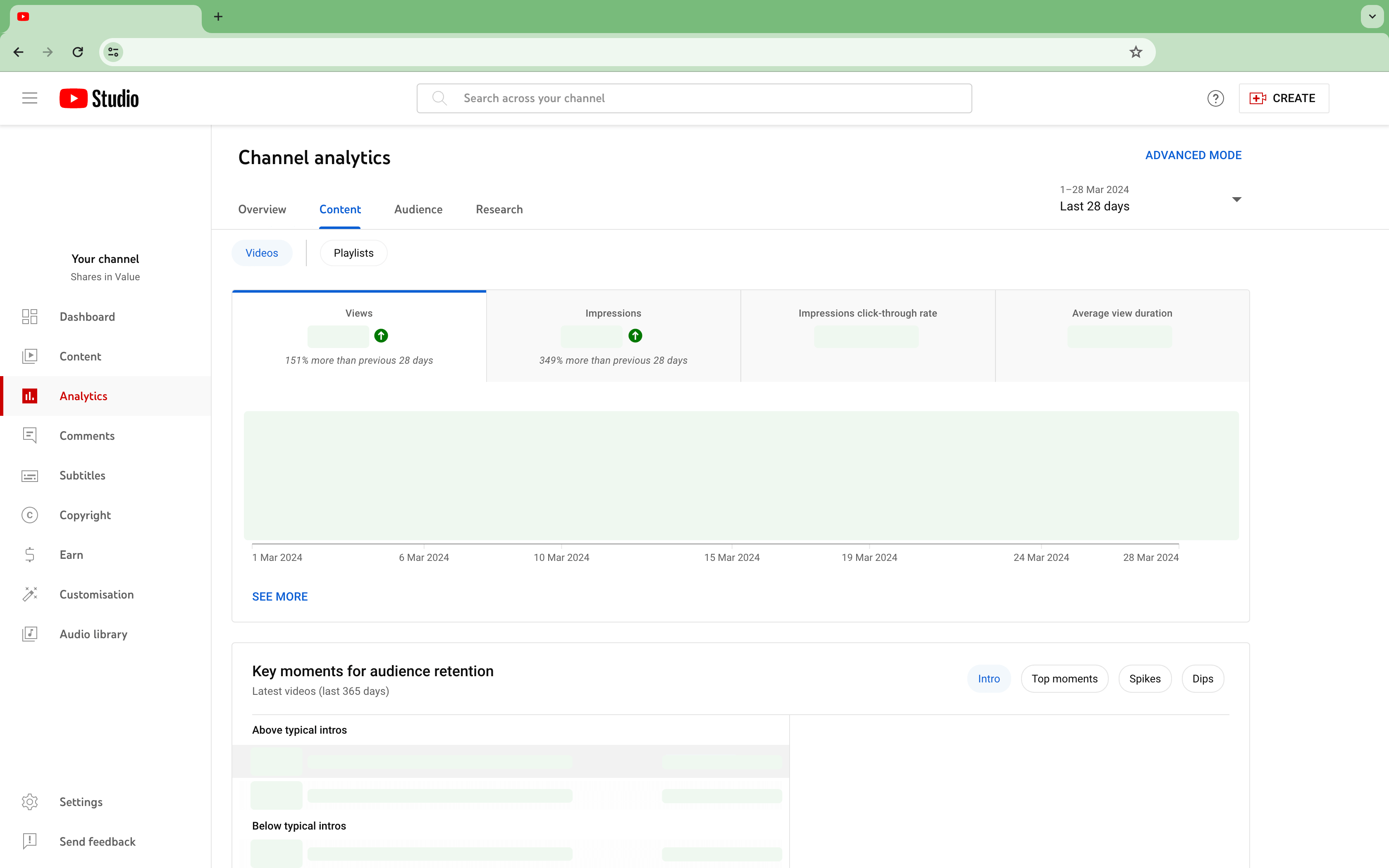Launching and running a campaign is just the beginning — tracking the right YouTube ad metrics is crucial to achieving your campaign objectives. While relying solely on platform-provided data may be tempting, true success in YouTube advertising demands a proactive approach.
In this blog, we will explore the essential YouTube ad metrics that advertisers should keep an eye on during the reporting phase of their campaigns. Understanding and leveraging these metrics is pivotal for making informed, data-driven decisions that can significantly enhance the effectiveness of your video advertising efforts.
Tracking the Right Metrics in Analyzing YouTube Ad Performance
Monitoring ad campaigns can pose tremendous challenges, particularly if you’re unsure where to begin. In previous discussions, we explored how specific ad formats align with distinct campaign objectives, and the same principle applies to YouTube ad metrics.
Given the uniqueness of each campaign, you can’t merely replicate strategies and metrics from other brands or advertising endeavors. From grasping platform basics to analyzing optimal ad placements and understanding the YouTube ad metrics essential for tracking, these steps are vital for gaining full control over your YouTube campaigns.
Key YouTube Metrics for Advertisers to Watch
To effectively track your performance, it’s crucial to familiarize yourself with these YouTube ad metrics. These metrics fall into two primary categories: engagement metrics and campaign performance metrics.
Organic Engagement Metrics
Engagement metrics offer insights into viewer interactions with your content. Since these ads are hosted on YouTube, they naturally generate engagement similar to regular YouTube content (if published for public viewing). For advertisers whose goals align closely with viewer engagement, the following metrics are essential:
- Average View Duration: The mean length of time viewers watch your ad.
- Average Percentage Viewed: The average portion of your ad that viewers watch.
- Click-Through Rate (CTR): The percentage of organic impressions that lead to clicks.
- Impressions: The total number of times your video was displayed in search results.
- Likes & Dislikes: The number of positive and negative reactions to your ad.
- Subscribers Gained: The increase in channel subscribers attributed to your ad.
- Views: The total view count of your ad.
- Watch Time (Hours): The cumulative amount of time viewers have spent watching your ad.
You can access these metrics through the Analytics section of your YouTube Creator Studio.
* Note: Applicable only to publicly listed YouTube content that receives organic views and engagement while being utilized as video ads. This does not apply to dark posts or unlisted videos.
Paid Ad Performance Metrics
To better analyze your YouTube ad campaigns, take note of these campaign performance metrics, accessible via Google Ads Manager:
- Clicks: The total number of clicks on your ad.
- Click-Through Rate (CTR): The percentage of ad impressions that resulted in a click.
- Conversions: The number of times a click on your ad led to a desired action.
- Cost per Acquisition (CPA): The average cost for each acquisition.
- Cost per Click (CPC): Your ad’s average cost per click.
- Cost per Mille (CPM): The cost per thousand impressions.
- Cost per View (CPV): The average cost for each video view.
- Impressions: The total number of times your ad is shown.
- Video Completion Rate (VCR): The percentage of times your video ad was played to completion.
- Views: The total number of views your video received in a paid ad format.
- View Rate (VR): The percentage of impressions resulting from a view.
Know Which Metrics Matter For Your YouTube Ads Reporting
Having grasped the fundamental metrics, focusing on YouTube ads reporting is your next step. Organizing your reports and identifying the most pertinent metrics for particular YouTube ad campaigns pose essential questions. But how do you determine which metrics are the most relevant for your specific campaigns, and how can you efficiently organize your reports? Here’s how you can identify the key metrics for your YouTube ads reporting:
Utilize a YouTube Ads Reporting Template
For a more standardized approach, consider using a YouTube ad reporting template. Our media buying team at Strike Social consistently relies on a set of core metrics for campaign monitoring across various advertising formats on YouTube. These templates provide a structured framework for tracking, allowing you to maintain focus on the metrics that directly impact your advertising objectives.
Given the unique nature of each campaign, this template should serve as a foundational guideline. It includes fundamental metrics suitable for a broad range of campaigns. However, based on the specific needs and goals of your individual campaign, you have the flexibility to tailor this template. This means adjusting and supplementing it with additional metrics necessary for a comprehensive view of your YouTube ads reporting.
Align your tracking efforts with your advertising strategy by including these standard YouTube ad metrics in your reports:
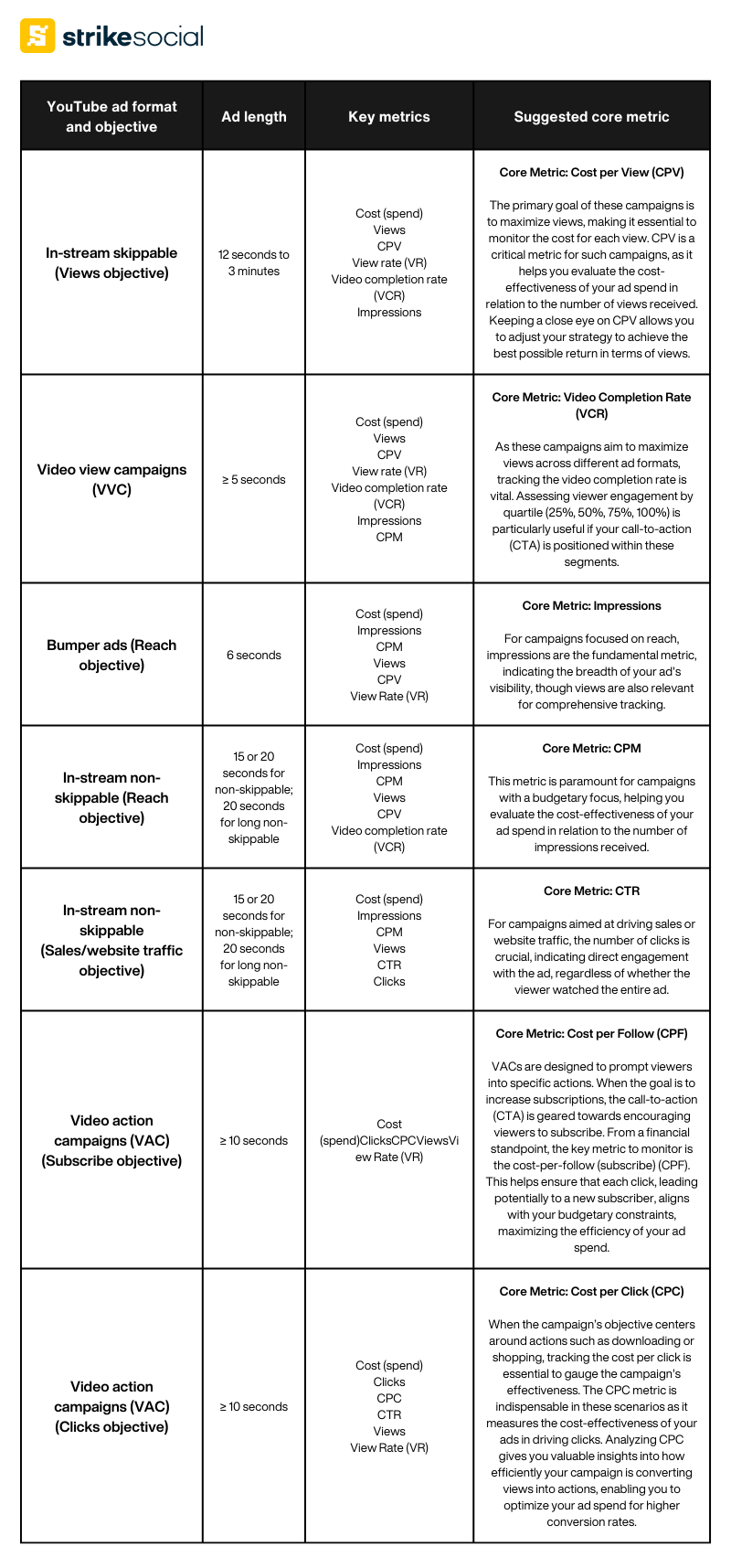
To illustrate how to tailor your metric tracking to specific campaign objectives, let’s examine two sample scenarios:
Scenario 1:
“I am conducting a Video Action campaign aimed at app downloads for my brand. How should I structure the YouTube ads report for the finance department?”
Focus on metrics demonstrating the campaign’s return on investment (ROI) for the finance department. Here’s a breakdown:
- Key Metrics:
- Cost per Action (CPA): The campaign’s overall cost divided by the number of specific actions, like downloads in this case.
- Conversions (Downloads): Tallies the downloads following ad interaction.
- Conversion Rate: The ratio of Conversions to Clicks.
- Impressions: Tracks the frequency of ad displays to viewers.
- Clicks: Records the number of user interactions with your ad.
- Additional Metric/s:
- Return on Ad Spend (ROAS): The revenue from downloads versus total campaign expenses, applicable if your app is paid or includes in-app purchases.
Scenario 2:
“I am preparing a YouTube ad performance report for the creatives team, focusing on an In-stream skippable ad campaign with a Views objective. How is the YouTube ads reporting structured in this case?”
- Key Metrics:
- Cost per View (CPV): The total ad spend divided by the number of views.
- Views: The count of times your ad was watched for at least 30 seconds or its full length if shorter.
- View Rate (VR): The proportion of views relative to Impressions, a critical figure for assessing viewer engagement versus ad skips.
- Impressions: Counts the instances your video ad was viewed.
- Additional Metric/s:
- Click-Through Rate (CTR): The ratio of clicks to Impressions, to gauge if the ad also incited viewer interaction.
- Video Completion Rate (VCR): Determines viewer engagement depth, useful for the creative team to enhance ad engagement or adjust CTA placement based on viewer drop-off points.
The Role of YouTube Ad Metrics in Campaign Analysis
YouTube ad metrics might seem like mere numbers on your screen, yet they are crucial in determining whether your advertising campaigns meet your brand’s objectives. For example, you might find your Sales campaign struggling due to insufficient view completions, preventing your audience from taking the desired action. Similarly, your Awareness campaigns could suffer from low impression counts, leading to inflated CPM. Mastery of YouTube ads reporting equips you with the knowledge to navigate these challenges adeptly, allowing you to adjust strategies based on actual performance data rather than relying on assumptions or comparisons to other brands.
Ownership over your benchmarks is as crucial as the strategic planning and execution of your campaigns. Media buyers and advertisers are not just participants in the YouTube advertising journey; you are the architects shaping future trends. By harnessing the insights provided by these metrics, you position yourself to make informed decisions and ultimately drive your brand towards its goals with precision and expertise.

The Complete YouTube Guide


